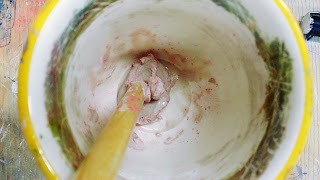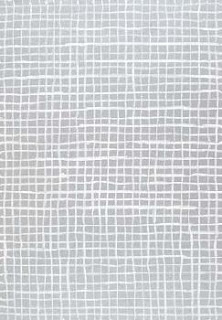I get the feeling that these two works have
been jammed together
The sensibility seems very different
Interesting use of black and white images
The cut out trees, the sky
Are
more ordered and controlled
I like substance of the work and the little squares here, from
far away I didn’t notice they were sewn and I thought they were drawing.
You can see the relationship between the
paint she has used.
A subtleness kind of thing
I see the images as diagrams, there is a
graphic design context
These images are closed up where the string
joins
I would not imagine the colour and the cut
outs together
Is it more about the diagram rather than the
diagramatic
I find everything interesting but they work
as two separate works
It is kind of a mad and I like that
It is the disjunctive things I like that are really hand done
The work is disorientating, I like the idea
but I do not like being forced to look at it
Colours match, ie thread and paint, a family
line of connection.
Why the big black mount board
It is a throw back from primary school
It is a part of painting yet it isn’t
The top has a chalky effect to it, they do
look very similar but different and I like the idea of each one trying to be
dominant
Cut outs feed the idea of it being soft and
architectural
Industrial, buildings, electricity,
structured, organic intervention
Abstract/expressionism
The hand drawn grid sense of blocks is very
soft, the softness is much more ofthe body I
want to see it playing off against
Grid - For me it makes the most of it
The idea of stitching together and using
small thread is interesting.
These are incomparable qualities
The force of the connection. Does this come with this
I feel like I am looking at a diagram of the
internet, this comes with this etc
Force the disconnection, eg Ian’s story about
incompatible materials
Deconstructing the idea of making something completely new
The easy selection would be to pull something
out
Thomas Edmonds
I think something else is going on here. I like the different mosh-ups
my
response - I would like to see them as complete opposites
Albert Olan
Placed elements in a violent way. Play around with scale
Everything within this image is of a certain
amount of dimension, getting a push and pull
Julie Mehretu
If the black paper was measured there would
be a bit more drama, the more of a thinking about the black paper
How would it be if something touched the
image
We may be seeing the beginning of something
Recognise each one of these elements as a
thing as opposed to a background and a device
Constructing something
I think there is room for the
........................ to be more coherent
Shergy Jensen
If this is the conversation that moves into
the collage of images are from elegant??
Highlight the soft stained patches and then the tougher lines
This is a very delicate, quite slow,
procedure
I feel like it is supposed to be growing out
more
It wants to be organic or somewhere else










































